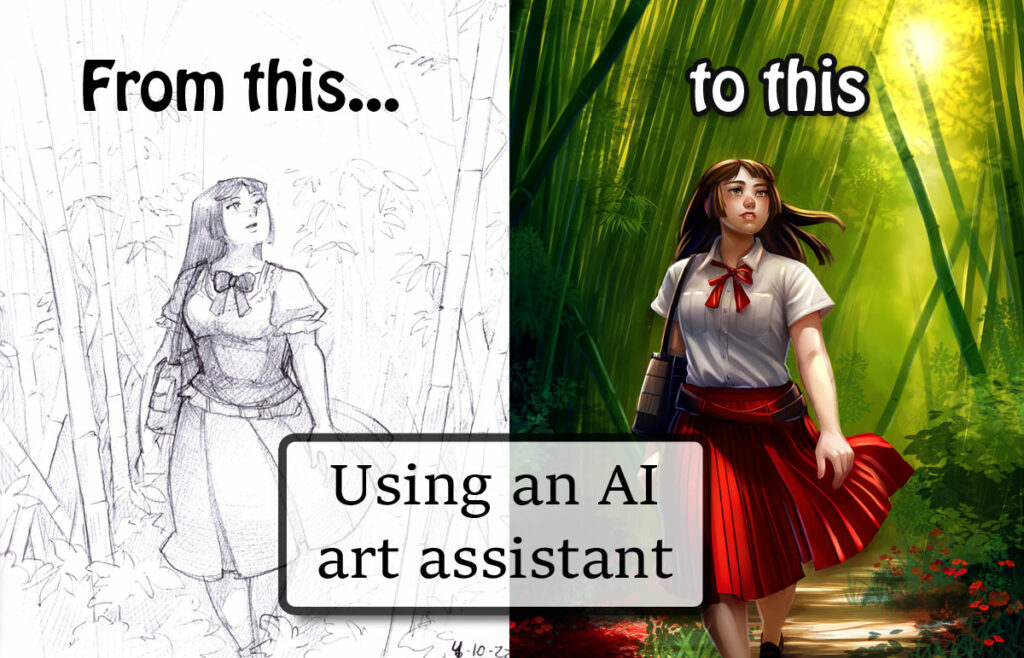
In the last 6 months, AI art has become a hot topic issue amongst artists–and for good reason; The technology is capable of doing an entire art piece in a matter of seconds. Sometimes it even produces beautiful artwork (Though, if you’ve messed with AI, you know that it, more often, creates creepy artwork.) There is no doubt that this new technology will upset the art industry. For many artists, this is scary. Will this take away their jobs? Make them obsolete? Is the computer just going to steal their artwork? Just take a look on social media. There are tons of posts of artists screaming “NO AI ART!”
However, I couldn’t help but think of when Photoshop first came into existence–almost the exact same arguments, fears, and push back was happening then. Now over two decades later, no one argues whether or not a piece created on the computer versus on a piece of paper is considered art. Photoshop and its break offs like Procreate, Clip Studio Paint, and Medibang are just an everyday tool to the creator.
So why not AI art?
I’ll be honest, the moment I saw some of the stuff AI was creating, I felt a spark of eagerness and joy. Let’s face it. Art takes a LONG time to create. Art takes hours and hours. The better you want your piece to be, the more time you have to sink into it. And if you’re on a deadline, you often have to compromise your vision and desire to create something breathtakingly astounding to hit those deadlines. You see this a lot in comics. Many comic creators are actually fantastic artists, but you open that book and you just see a lot rushed lines and haphazard art. What happened to their skill? That beautiful art you love? It’s from crunch time deadlines. And let’s face it: you don’t get to keep your audience if you make them wait too long to get the next issue, episode, or page. Suddenly your just slow and unreliable!
Artists are their own choke point. They can only work at a certain speed and that’s it. That’s why people spend time creating brushes, actions, shortcuts and more in photoshop. Artists use 3D renders, posable models, photo references, all to speed themselves up. They are creating ways to keep their accepted level of quality while trying to hit that deadline. So to see a computer render an entire piece in seconds? Holy crap, did I want to use that. As a comic creator, who writes and draws her own stories, my biggest frustration was that I’d never ever get to tell all the stories I wanted to. Stars! I would be lucky to finish my current comic within the next twenty years! What are the chances my audience would want to hang around that long to read my comic at only a page a week for twenty years? Highly unlikely. They’d move on thinking “Man, Jemma is so slow, it’s been a decade and she’s saying we’re not even half way through. I’m gonna be a grandma by the time this is done! I’d rather spend my energy reading a sweat-shop comic out of Korea.” It’s a horrible predicament for a gal such as myself who can’t do art full time.

But to have a program that could potentially offload my workload and turn a 12 hour comic page into only a few hours? That would be incredibly liberating. My dreams of creating all these stories crowding around in my head could actually become a reality. So instead of worrying if the AI was going to steal my art and my job, I thought: “Why not make it work for me instead?”
AND SO MY OUR AI JOURNEY HAS BEGUN.
First off, I just want to say AI is really stupid. Like REALLY REAALLY stupid. It’s a creature in it’s infancy that literally can’t tell how many fingers a person has, or sometimes even how many arms a person has. Getting it to deviate from the norm is even more difficult. “Girl with purple skin.” will get you a girl with normal skin but purple hair, or a purple beret. Something it’s seen before. But then on the next render it’ll give you some monstrosity out of some creepy horror flick with too many eyes and not enough nose. It only knows images it’s seen, but it doesn’t actually understand the physics or 3 dimensionality of those images.
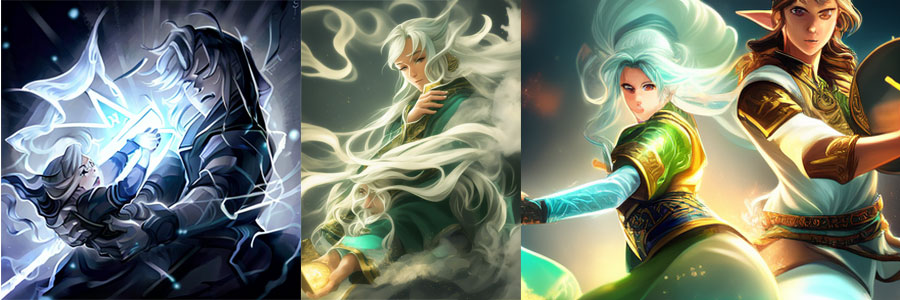
Within a few minutes of trying out AI, I quickly realized that it was a whole different process to create artwork. It requires a different mindset and skill. Unfortunately, as a person who can just draw the thing I want, plugging in different words to try and get a computer to generate what I’m picturing and keeping on getting fail after fail was frustrating and I sorta swore it off.
However, Jacob, my husband who is my #1 Supporter of ALL TIME, has a natural knack for this computer AI crap. Jacob LOVES to create cool things and he has a great eye for design. He just hasn’t dedicated the thousands of hours I have to develop the skill required to make his hand do the thing. In a way, he makes for a pretty decent art director. Not only that, Jacob has experience as a quality assurance software engineer. His career has taught him how a computer thinks. He understands how simple things like a “bowstaff” could be interpreted as a “bow” and “staff” and will wreck the image you’re trying to create. He loves the element of surprise the AI creates, unlike me, where I’m like “I’ve tried 4 times, it’s not even close to what I want! I’m done with this stupid machine, I’ll just go draw it myself!” (I can say that, cause I actually can go draw the thing.)
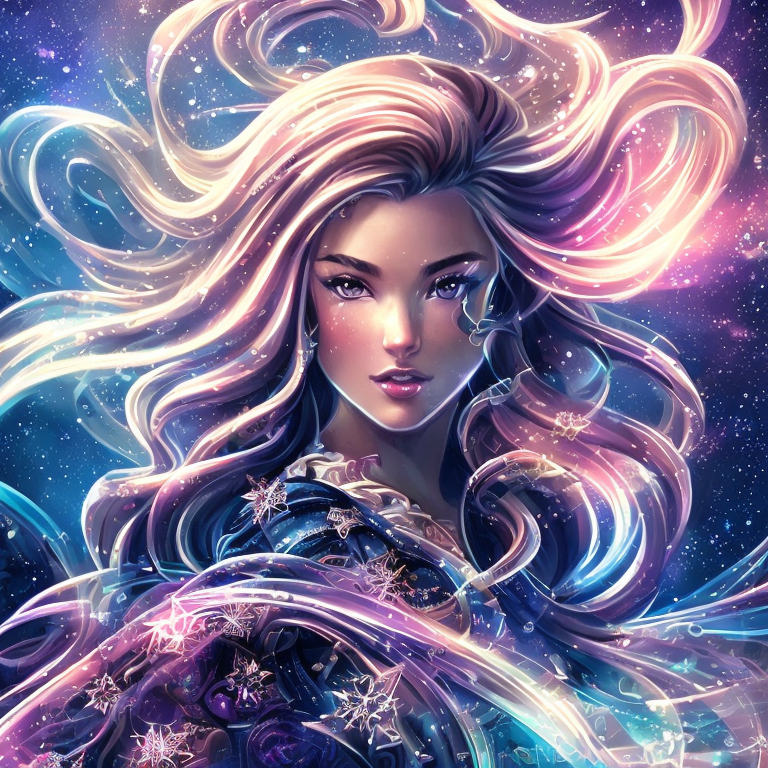
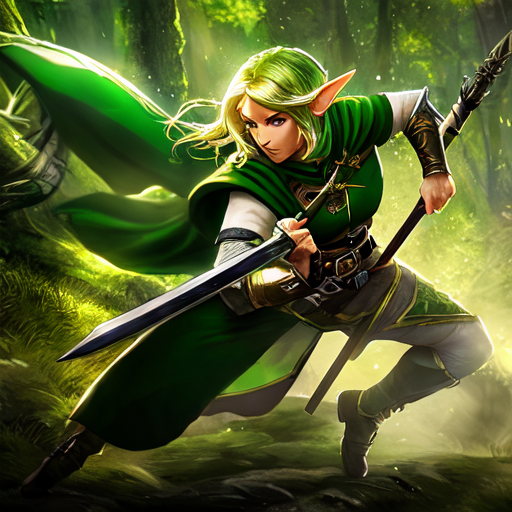
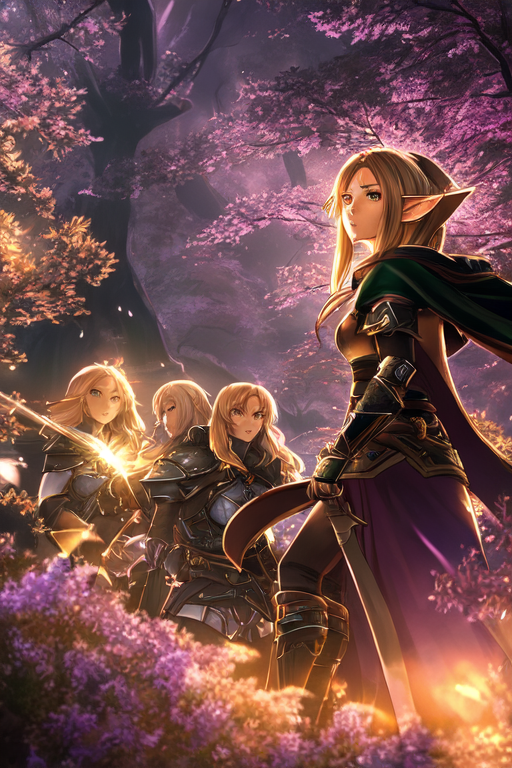
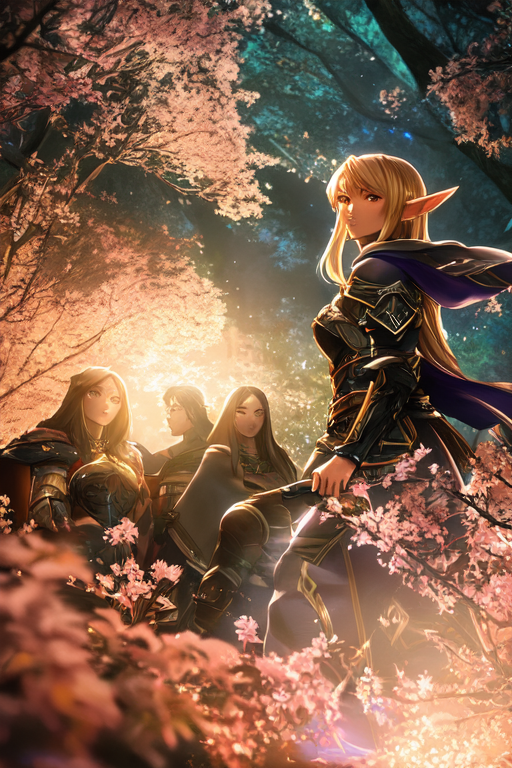
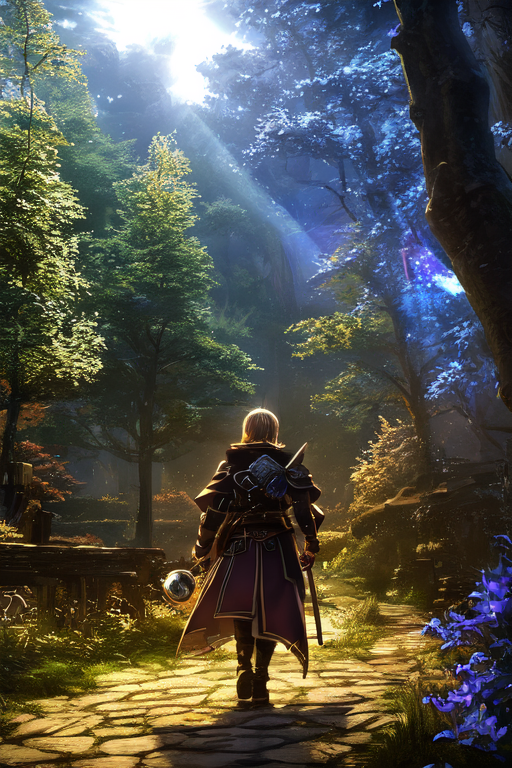

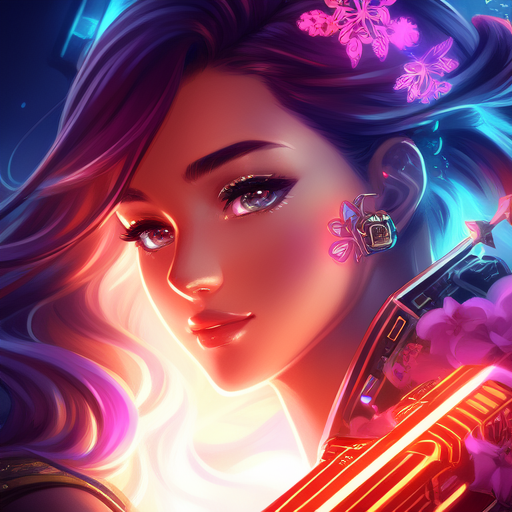

So with our powers combined, we face the AI unknown.
Now, when we first started, we decided to get our own computer and host the AI on it rather than going with an online service. There were several reason for this.
- We wanted to make sure our stuff was private. Online services post things that people are prompting in a public space and technically everything made is public domain. As a comic creator, I wanted to make sure what we made was private.
- We wanted to use a closed system. Our goal was to train our AI using my own artwork in order to have it emulate my art style. It’s not stealing art and art style if you’re stealing it from yourself, right?
- Finances. Most online services charge for the time spent processing your prompt. This is because it takes a lot of computer power to generate these images, and then they have it stream over the internet, which is expensive. Rather than spend money using an online service and not having anything to own for it, we opted to just buy our own computer to generate the artwork.
What we use:
There are several different technologies doing AI art currently. The one we went with was Stable Diffusion.
From Stable diffusion there are several processes, including LORA, textural inversion, and dreambooth. We are still learning how to use these processes to train our own AI to do what we need it to. We also use Invoke AI, which allows users to do “in-painting”. This allows users to only re-render only parts of an image instead of making the AI redo the whole image. This way you can take parts you like and just edit the parts that you don’t. With every iteration, this program feels more and more like photoshop.
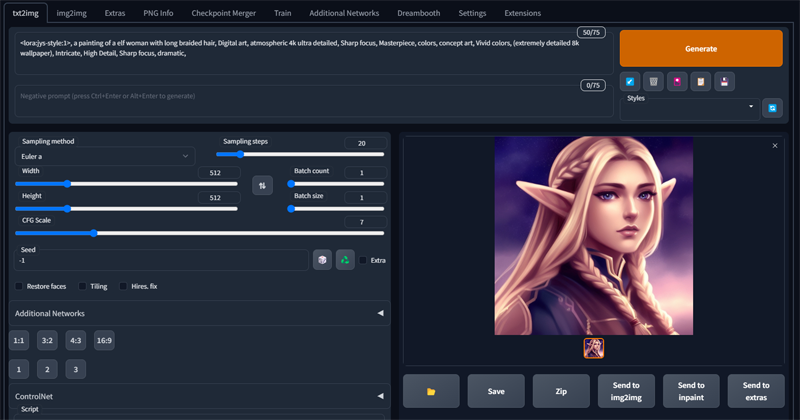
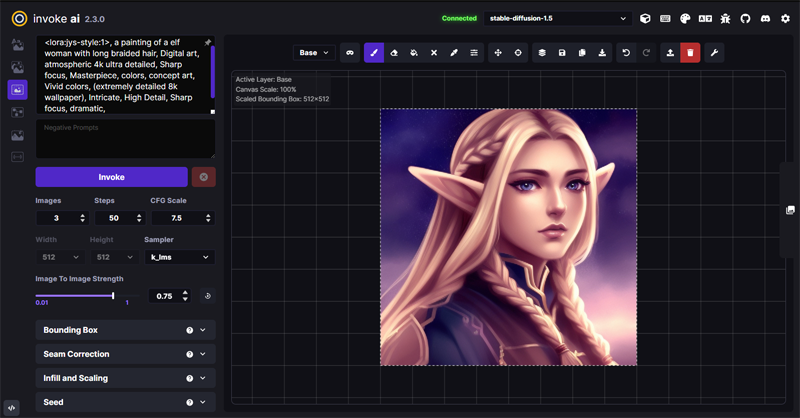
Now, we are still very new at this whole AI stuff, and AI is still very new! That means that the technology changes practically every day. And we are still learning how to utilize this technology. Our ultimate goal is to have the computer take storyboards and sketches that I create and then have the computer render out those images that I can then put into my comic art files. To do this is pretty complex because the computer needs to recognize my sketches correctly, then know the characters that are supposed to be in those sketches and render them consistently. Most AI art people are seeing are great–but only for that one image. The moment you need to tell a story with consistent characters and lighting it becomes a very difficult thing to do. If we can get the AI to even take an inked and flatted comic page and render it, that would be a huge victory. But we know doing this could take a while to get to, both in our skills as creators and the technology getting to the point where it’s capable of such a feat.
Right now, we are still working up to this lofty goal, but we wanted to share our journey to this point and how we are utilizing AI to speed me up as a creator.
First off, we started off simple: letting the AI generate art based on just text prompts to see what it came up with. We tried training it in my artstyle, but AI training is an art form of itself and we are still learning how to do it better. Our training needs fine-tuning, but our initial try gave us a good jump-off point since we just wanted to test the capabilities and workflow.
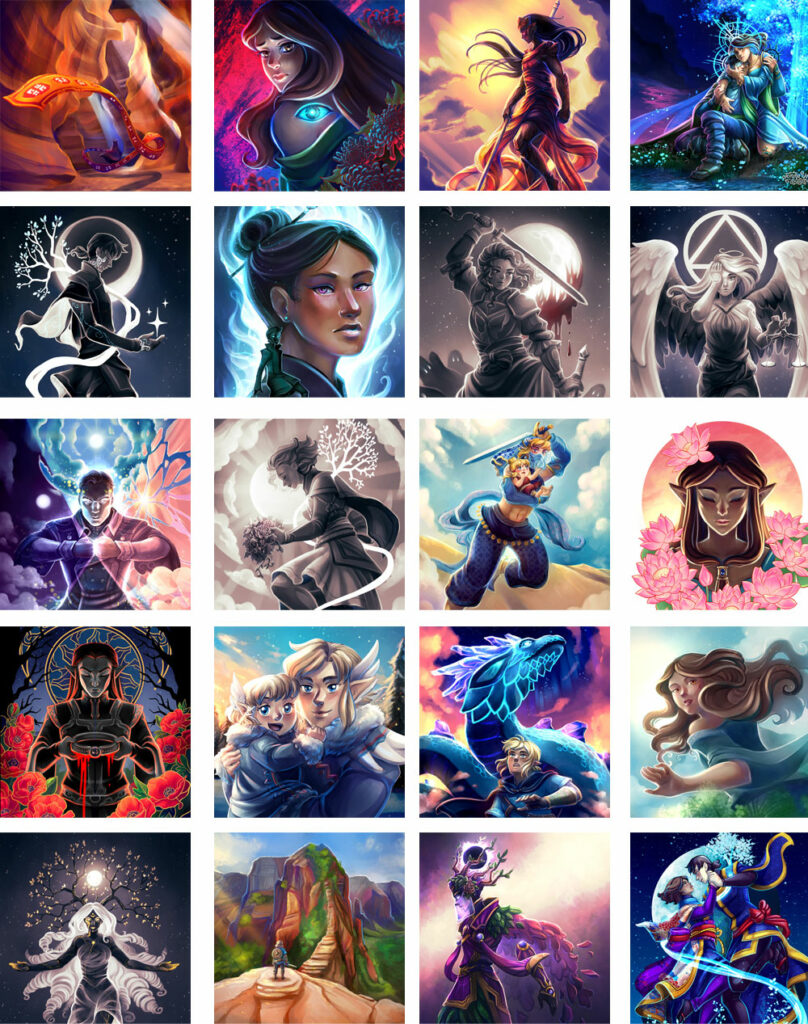
We spat out a bunch of images using the art style we trained. The rendered images were decent, but they still didn’t entirely look like my work. But that’s okay because I’m an artist! Which means I can fix it. I took this image of Koe from my comic Children of Eldair that I liked and started messing with it.
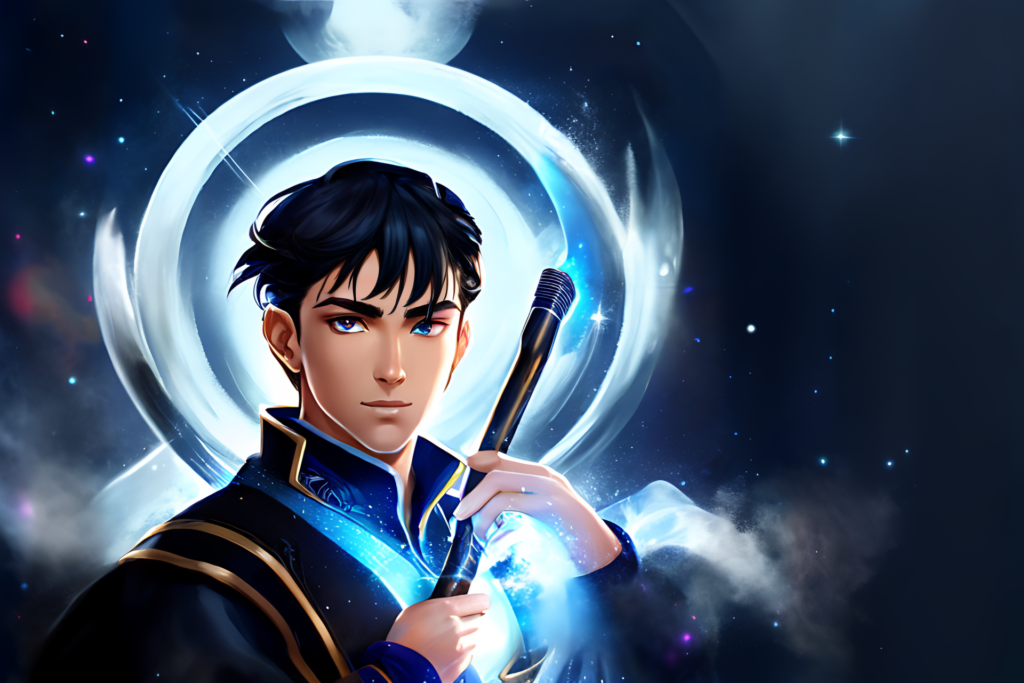
Now remember how I said AI is dumb? Getting it to put scars on someone’s face? Near impossible. But that’s okay. The goal wasn’t to have it do all the work, but speed up my process.
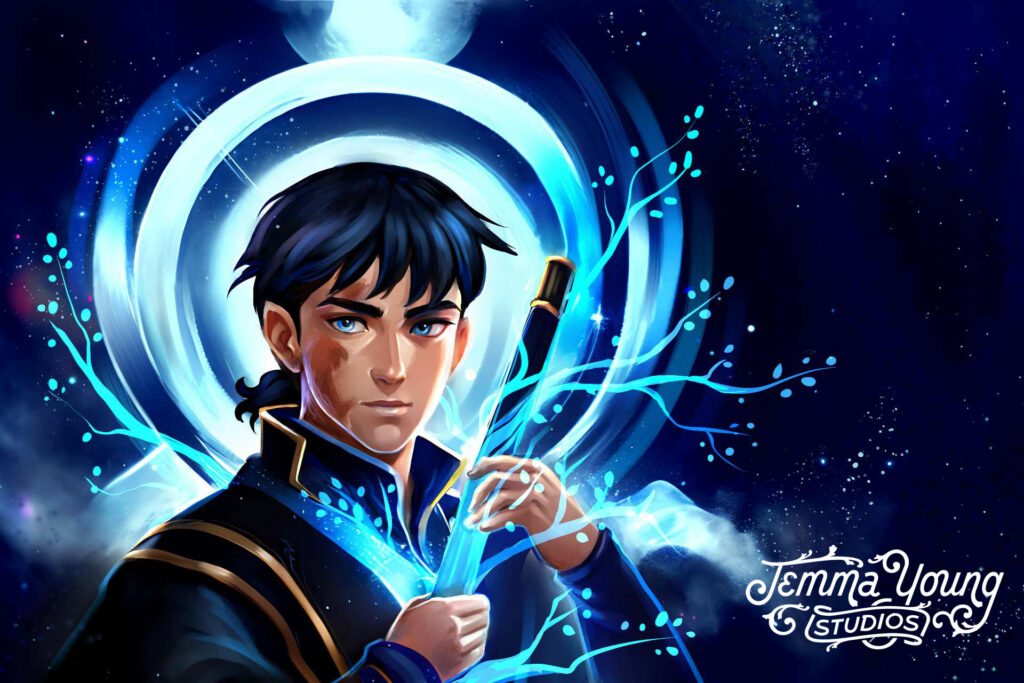
Here’s my edits and redraw of the same image using the ai art as a base. I added more rendering and my own flair of magical tree branches — because I love magical tree branches. Once completed, I shared this with close friends and followers who said if they didn’t know I used AI they never would have been able to tell. This was a good sign and knew that utilizing AI was viable. A piece like this would have taken me 8+ hours, but instead it only took me 2.
This is great for simple images and one off illustrations, but the real test was seeing if it’s could take more direction and keep things consistent. Having it be able to take a sketch and build off of it was super important. When we first started, that wasn’t really possible, but the technology recently developed “scribble” that can take a sketch and turn it until more. We tried it out!

Here’s a sketch from a year ago that I always wished I had the time to turn into a full illustration, but didn’t have the time. We put it into the AI and had it start generating stuff.
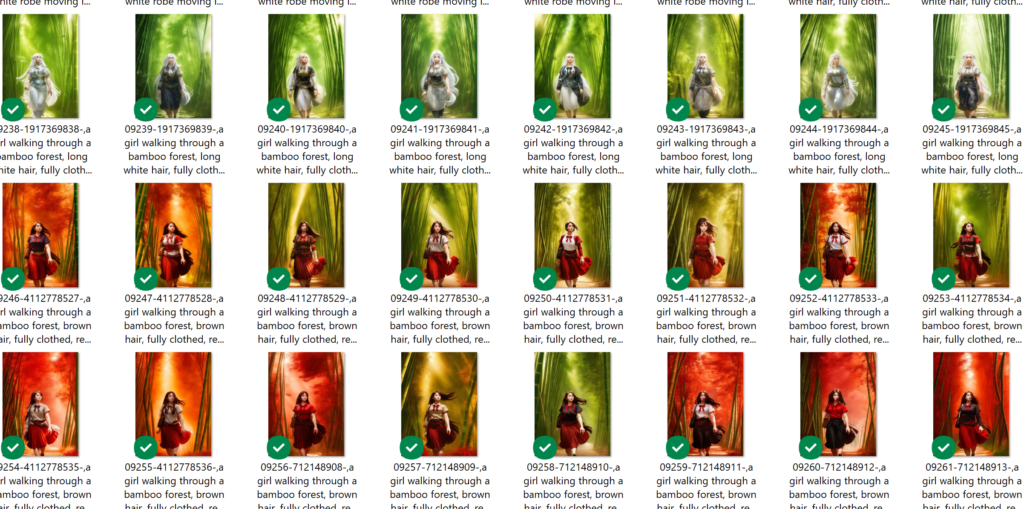
Some were good, some were terrible. But that’s just how AI art goes. But as we refined setting and prompts I got several that I really liked!
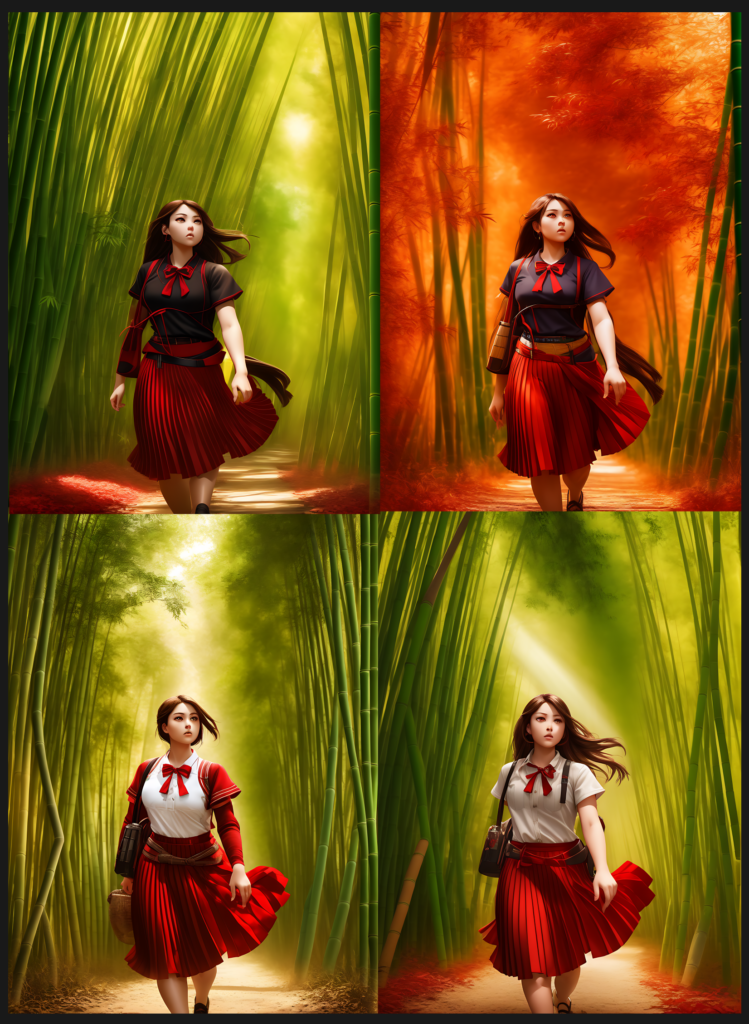
I ended up photoshopping four of them together to get things I liked from each one and used it as my starting point. While I really loved the red background on image 2, I originally intended it to be a green bamboo grove. So I opted to stick to my original intent for the image.
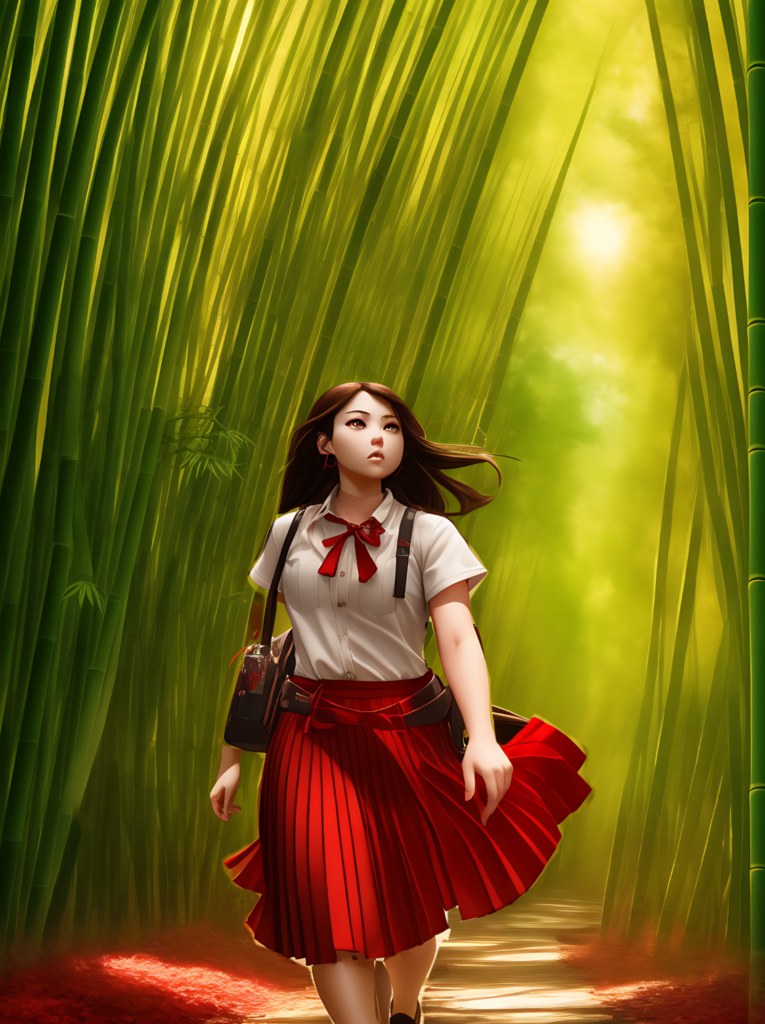
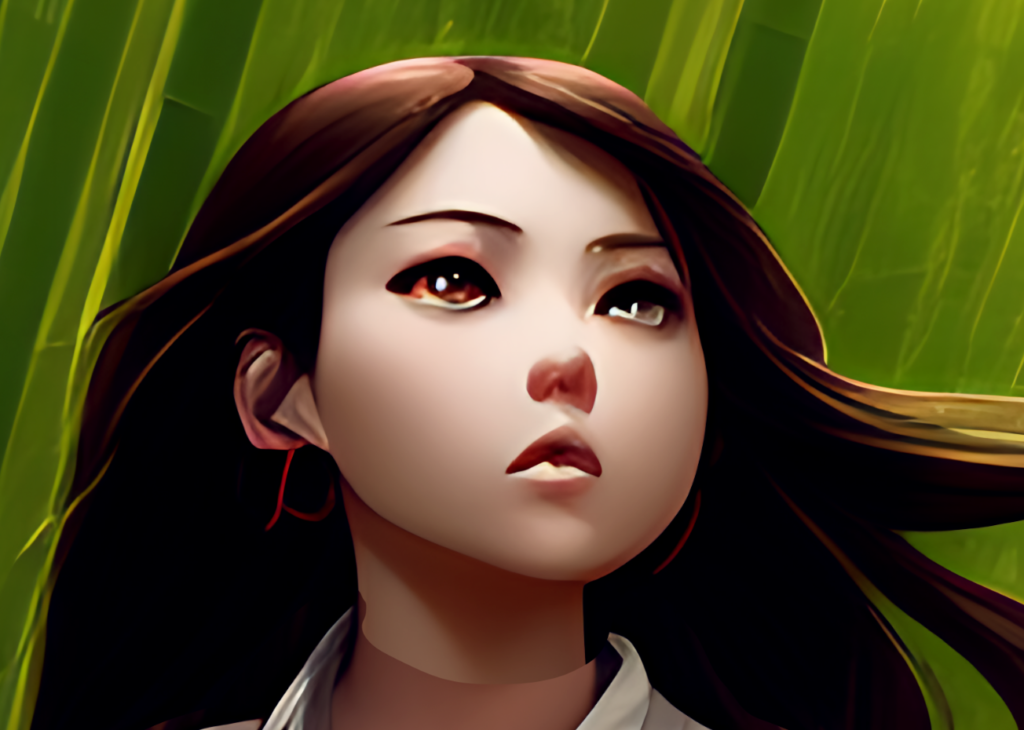
Fixing lighting, color balance, rendering, adding things, and taking things out, I finished up the illustration with something I’m pretty pleased with. It took me a fraction of the time while staying pretty true to my style.


I tried this out again, using a sketch to AI to my own final edits. The results are pretty satisfying and honestly very fulfilling. Using AI generated art as a base was super helpful in my workflow and helped me create something engaging in a fraction of the time. Maybe I could get back to creating full blown illustrations between comic work again!

Another thing we’ve tried is creating assets for comic pages and illustrations. Getting the AI to do a whole piece is cool, but sometimes it’s more optimal for it to just create a part of an illustration–or an asset.
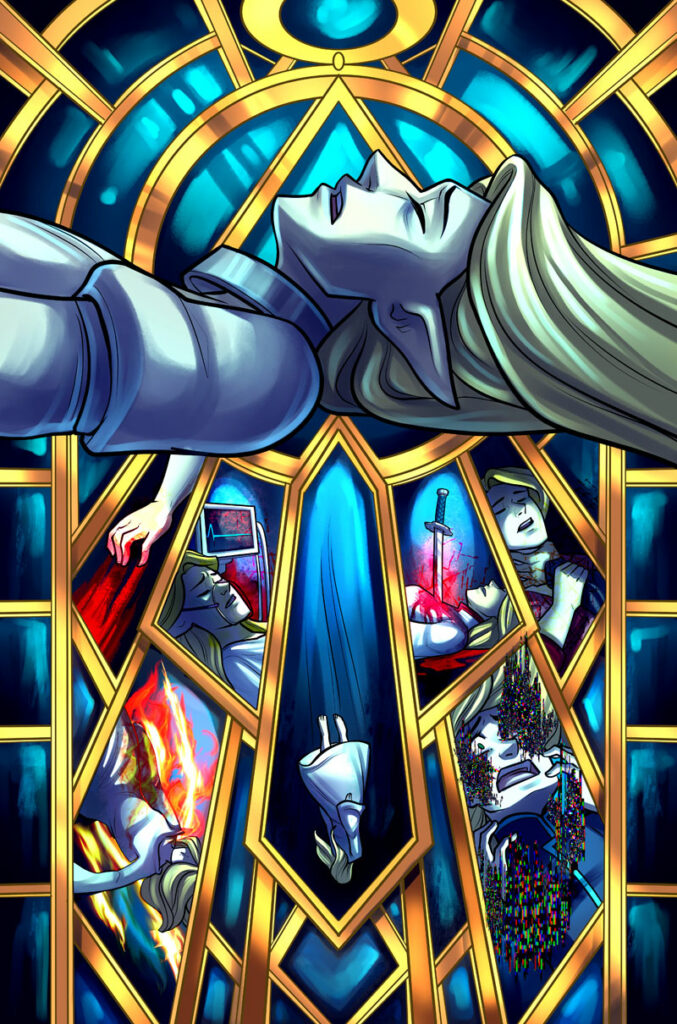
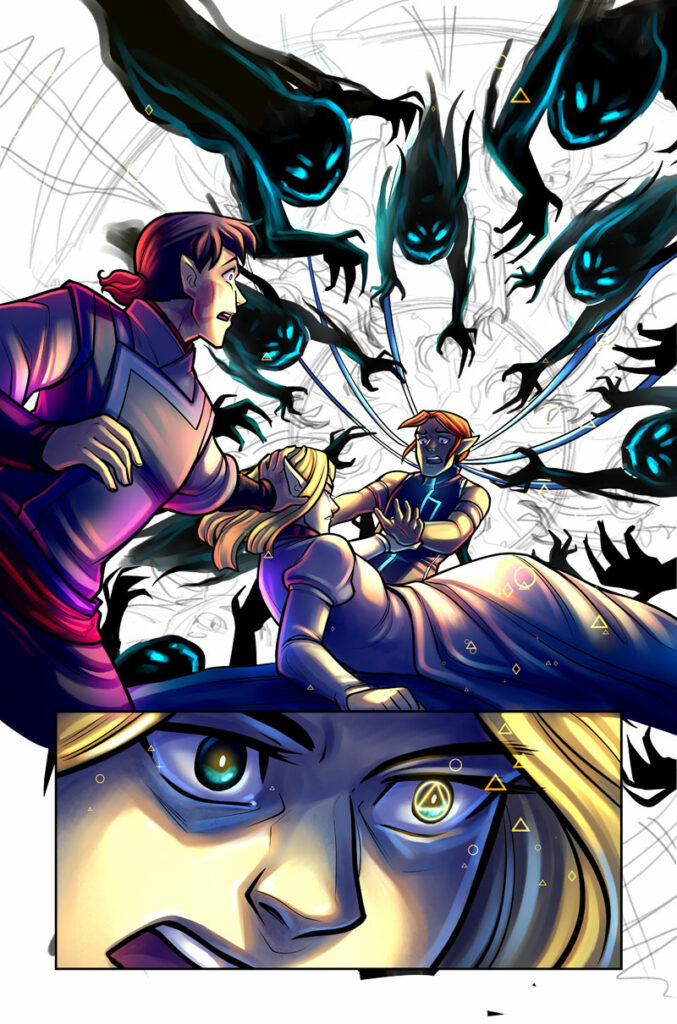
In these pages of Children of Eldair, I wanted to do something more complex mimicking a stain glass window. Drawing stain glass is a pain in the butt and time consuming, especially the way I was envisioning. So instead of spending 20+ hours on just the stainglass part of these pages, we turned to AI.
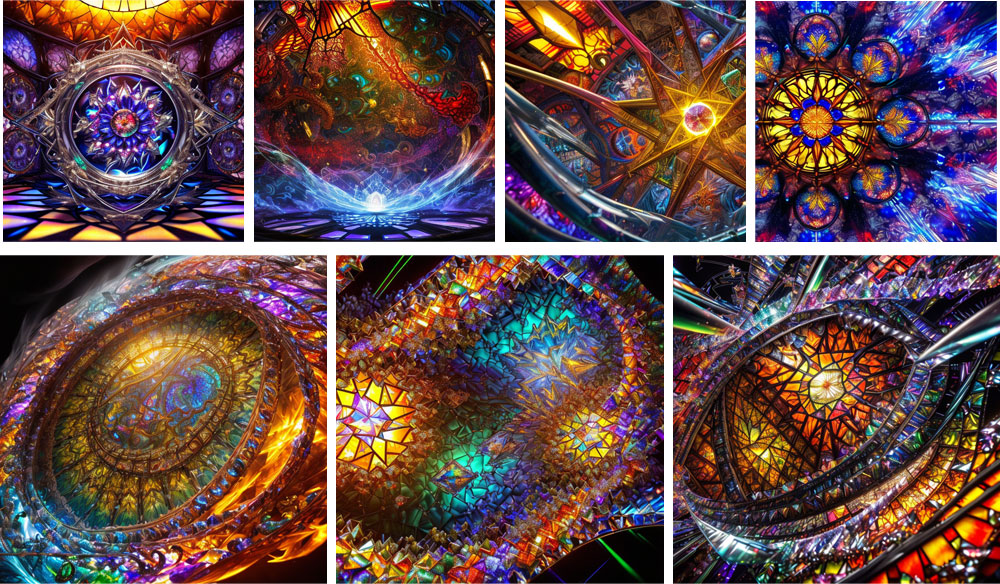
Jacob generated a good dozen stain glass pieces using prompts and we found several that we liked. I placed them in the comic pages and changed settings like contrast, colors, etc. and integrated them into the artwork. The result: Way better than I could have imagined (or ever done!)
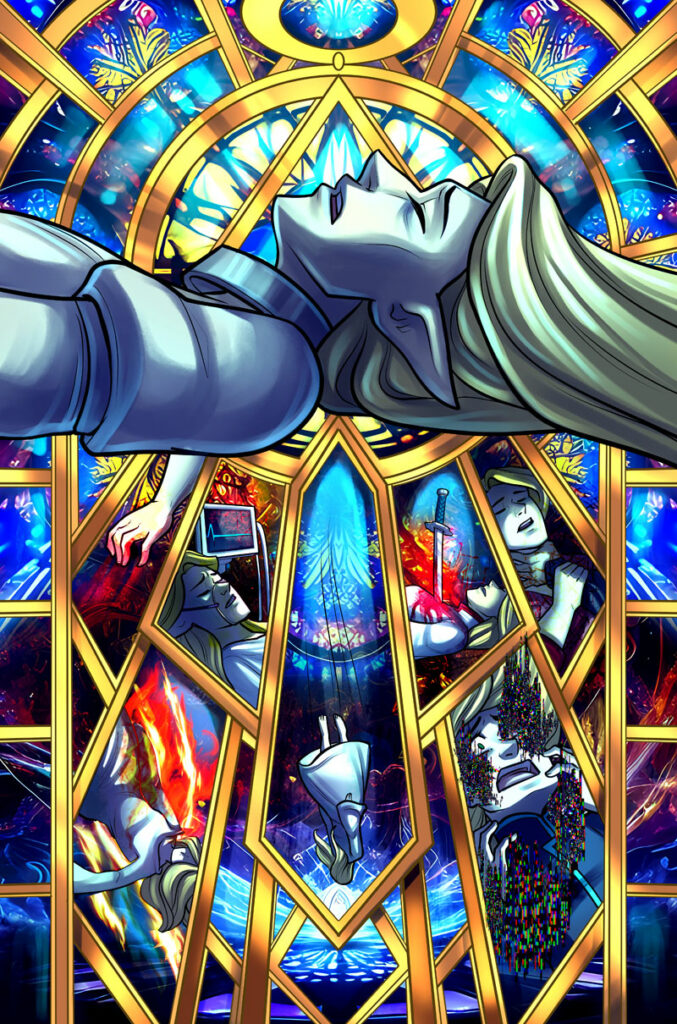
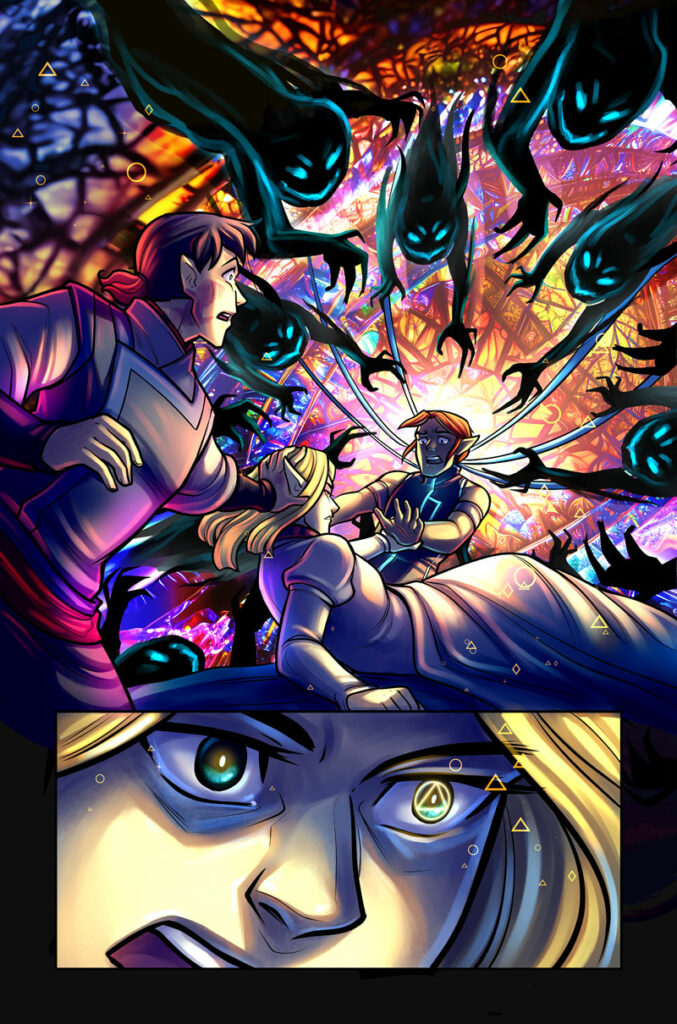
The more we learn and experiment, the more excited Jacob and I get. With us tag-teaming the AI and illustrative work, so many possibilities are opening up to us. Things I imagined but didn’t have time to draw is becoming more of a reality. The ability to create more beautiful drawn stories in less time could be the thing I need to really kick my career as a creator into gear.
I know AI art is scary for a lot of artists. We don’t know how it will effect our industry. It will disrupt things, change things, but it doesn’t mean art by humans will go away. We don’t have to lose our jobs. Much like Photoshop, we can learn to use it as a tool and even make ourselves more viable.
Thanks for reading my essay! I’ll be posting more in the future as our AI discovery journey progresses. If you’re a creator using AI, I’d love to hear how you’re using it to speed up your workflow and utilizing it for your art!

I had heard that AI could potentially speed up the workflow process for artists, but this is the first time I’ve read an explanation for how that works in practice. This is really cool! I loved seeing all of the progress images that you put together as you and your husband learned how to use the program. The final pieces still look like they were drawn by you from beginning to end, which blows me away.
This was a really reassuring read about AI-generated art. There’s a lot of people out there with their only goal being to make as much money as possible and they’ll steal other people’s time and hard-won skills to put as little effort in as possible. The ability to generate content is incredibly important and a lot of time you see people try to keep up with those puniahing deadlines and then they just burn out.
This is very well explained and I appreciate you have shared your process in experimenting with how artists could use ai to their advantage. I’m still on the fence as to whether I would use this stuff, mainly because of the computing power and technical complexity of it all, but I can see how that will probably change over time as technology becomes more accessible. All the best.
Really well-done, and well-explained! Thank you for taking the time to think through all this and share it publicly.
Ethical question from a newcomer: Are there some elements of your personal artwork-trained AI that had necessarily been trained on other artists’ work? For example, I saw the AI do some moves that we don’t see in your other work — I’m guessing it has to have had some basic training in human anatomy, how to shade an eye, etc. Maybe it was trained previously on open-source art by others?
Thanks again, super interesting! Found this article via google because I’m also a cartoonist who wants to finish something before 2050…
Hi there! I’m glad you found my article helpful.
The AI program we use does come with a library of models/ images that can come preinstalled–all of which were open-source, I believe. Whether these are pieces of artwork or photo references, I’m not entirely sure. Because we aren’t very good at training our own models off of my artwork yet, it needs to draw from other references that the AI has access too. Like I said in the article, we are still learning how to use this technology and fine-tune our own process!
In a way, I’m finding that I kinda like that the AI isn’t perfect. It gives me a chance to go in and make changes as I want and really make it my own piece of artwork. But at the same time, it still saves me a lot of time!